Pathophysiology > HESI > Patho Final/ HESI. Exam questions and answers. RATED A+ (All)
Patho Final/ HESI. Exam questions and answers. RATED A+
Document Content and Description Below
Patho Final/ HESI. Exam questions and answers. RATED A+ What are the different types of fractures? - -Transverse -Oblique -Spiral -Comminuted -Avulsion -Impacted -Torus -Greenstick What are ... the stages of bone healing? - 1) hematoma 2) callus formation 3) ossification 4) remodeling What is the difference between a traumatic fracture and pathologic fracture? - -*trauma* --> direct injury -*pathologic* --> disease process; osteoporosis, metastatic bone cancer What is the purpose of immobilization? - *to prevent further damage* -to preserve/ restore function by preventing pressure on nearby nerves, arteries, and soft tissues. What is osteoporosis? - -rate of reabsorption exceeds rate of bone formation -osteoclast production exceeds osteoblast productionWhat is an osteoclast? - a large multinucleate bone cell that absorbs bone tissue during growth and healing. What is an osteoblast? - a cell that secretes the matrix for bone formation. What supplement may promote osteoblast production? - calcium A decrease in what promotes bone mass loss? - estrogen levels What can enhance calcium absorption? - Vitamin D If calcium is too low in your bone? - *The parathyroid secrete PTH to stimulate the kidneys to make vitamin D precursor to help intestines absorb more calcium* -PTH can also signal bones to release stored calcium If calcium is too high in your bone? - the parathyroid secretes calcitonin to signal the bones to hold onto calcium an inhibit osteoclast activity What is compartment syndrome? What do you need to do to relieve this? Medical emergency? - *Increased pressure from swelling with the fascia compresses blood vessel which decreases blood flow to the muscles and nerves* -need to relieve pressure (loosen cast) -can be limb threatening due to lose of pulses (need to treat with emergency fasciotomy -decreased sensation -skin pallor --> increased capillary refill time -tight swollen shiny skin -may lead to tissue death and nerve damageWhat is osteoarthritis? - -affects mostly large, weight bearing joints -localized inflammation of joints -degenerative- known as "wear and tear" arthritis -mostly older adults -pain and aching -crepitus and grinding What is rheumatoid arthritis? - -affects mostly small joints -systemic inflammation- autoimmune response -leads to formation of pannus (vascular tissue) -all ages -stiff, swollen, tender, warm, spongy -fever, weakness, fatigue, weight loss, thin skin, corneal ulcers, nodules, vasculitis -exacerbations and remissions What are the 5 P's involved in the neurovascular assessment? - Pain (especially on passive motion) Pallor Paresthesia Paralysis Pulselessness Risk of DVT can lead to what? - pulmonary embolus (can be blood or air) What is a pulmonary embolism? - happens when a blood clot called a Deep Vein Thrombosis, often in your leg, travels to your lungs and blocks a blood vessel What are the 3 characteristics in Virchow's triad? - -Immobility (venous stasis) -Vessel injury (surgery) -Hyper-coagulability (clotting disorders/dehydration)Explain therapeutic monitoring regarding coumadin and heparin ? - -coumadin --> PT/INR -heparin --> PTT What is osteomyelitis ? What type of treatment does this require? - *a bone infection that is characterized by pain, redness, and swelling* -requires long term IV antibiotics -pt discharged with IV (probably PICC line) --> needs teaching Menopause is a physiologic decrease in what? Can lead to? Changes in? - *physiologic decrease in estrogen* can lead to: -osteoporosis -MI -Urogenital atrophy (atrophy of the vagina and urinary tract) Changes in: -bone health -cardiac -heart disease What is PCOS? Release of excess what? Signs and symptoms? - *polycystic ovarian syndrome* *A hormonal disorder causing enlarged ovaries with small cysts on the outer edges.* -presents in 5-10% of young women *release of excess androgen**signs and symptoms:* -excess hair growth -irregular menstural periods -infertility -acne (too much androgen produced at ovary) -insulin resistance What are some uncommon side effects with PCOS? - -heavy bleeding during menstruation -spotting between menstrual cycles What is the 2nd most common type of cancer? risk factors? - *breast cancer* -family hx -advanced age -obesity -sedentary lifestyle -estrogen replacement -alcohol -BRCA gene mutation What is endometriosis? - *endometrial cells which normally line the uterus are found growing outside of the uterus* -pelvis -fallopian tubes -ovaries -the affected tissue responds to hormonal changes and bleeds with the menstrual cycleNewborns receive and antibiotic ophthalmic ointment to prevent the transmission of which STI? - chlamydia Candidiasis is caused by what? - *an overgrowth of yeast due to the use of antibiotic therapy* ITCHY Trichomonas appearance? - has a classic strawberry appearance of the cervix and a malodorous vaginal discharge (green) What is the most common STI? - *HPV* -can cause genital warts and lead to cervical cancer -Routine PAP smears can detect cervical dysplasia which is associated with HPV What is most common causes of pelvic inflammatory disease (PID)? - STI's What are the 2 screening tests for prostate cancer? - -PSA (prostate specific antigen) -DRE (digital rectal exam) What is BPH? - *benign prostatic hyperplasia* -age related prostate gland enlargement that can cause urinary difficulty What is the patho of BPH? - -prostate enlarges and squeezes urethra -pts with BPH have problems emptying bladder (at risk for urinary retention) What is cryptorchidism? if untreated what can this cause? - *undescended testes (newborns)*-if untreated, can cause problems with fertility by preventing spermatogenesis -temperature in the abdomen is too warm to make sperm What is erectile dysfunction? increased in what type of pts? - *consistent inability to attain or maintain rigid erection for sexual performance* -increased in pts with uncontrolled diabetes (vascular perfusion deficits and certain meds- especially BP) What is asthma? Stimulation of what type of cells? - *chronic inflammatory disorder of the airways* -Hyper-responsive airway disorder -Triggered by allergens -*Stimulation of mast cells/ leukotrienes* -Bronchospasm and airway inflammation -Main symptoms = wheezing What are the two most common type of COPD? - -bronchitis -emphysema What is bronchitis? - *inflammation of the bronchi* -Inflammatory disorder of the bronchi -Bronchial edema and hypersecretion of mucus -Chronic cough What is emphysema? destruction of what? leading to? - *a condition in which the air sacs of the lungs are damaged and enlarged, causing breathlessness*-*Destruction of elastic fibers in the lung* *Alveoli over inflate leading to:* - airway trapping -Hyperinflation -Retained CO2 -Leads to barrel chest -Main cause is smoking -Inadequate levels of a1-antitrypsin -Due to retained CO2 What are the normal ABG values of respiratory acidosis? - pCO2 > 45 [Show More]
Last updated: 2 years ago
Preview 1 out of 24 pages
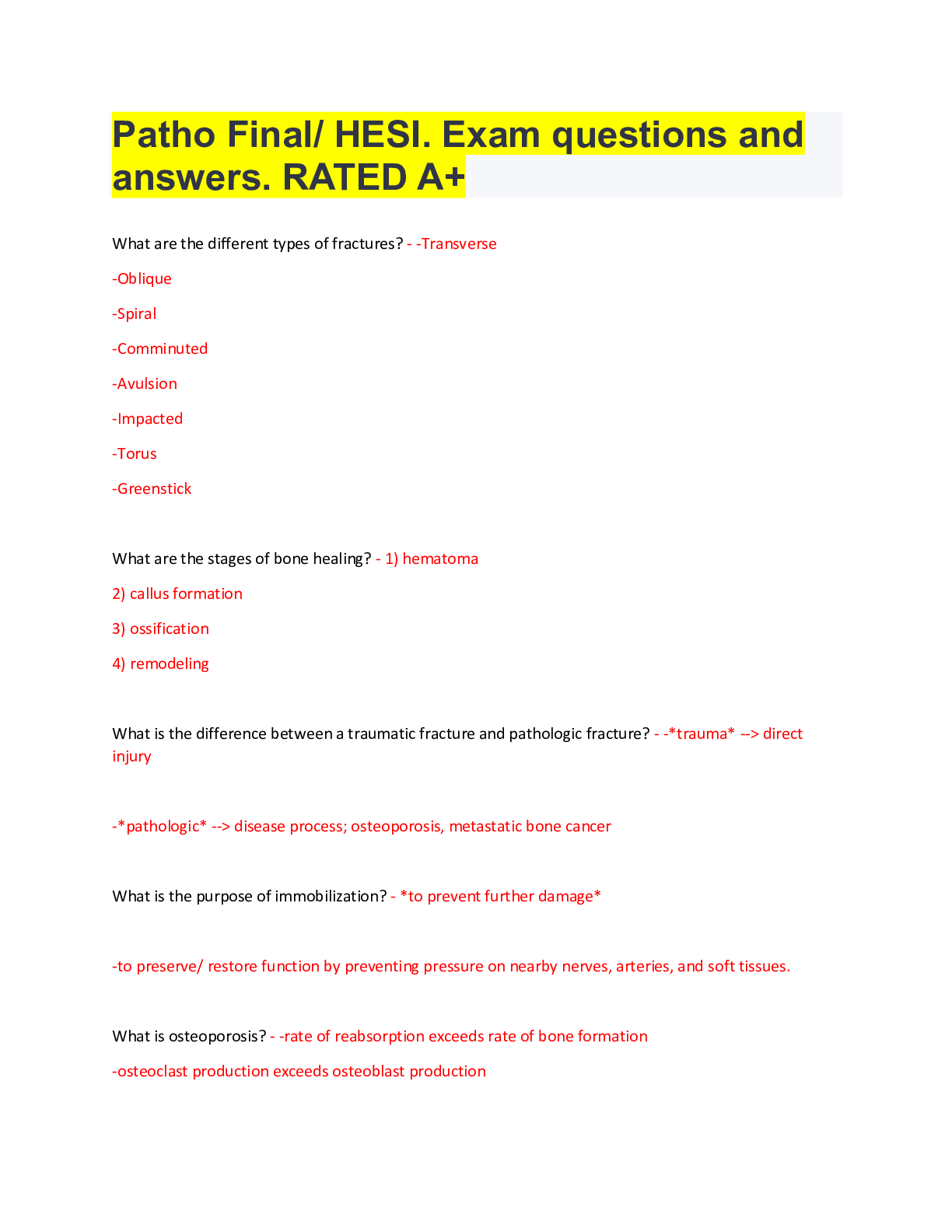
Buy this document to get the full access instantly
Instant Download Access after purchase
Buy NowInstant download
We Accept:

Reviews( 0 )
$10.00
Can't find what you want? Try our AI powered Search
Document information
Connected school, study & course
About the document
Uploaded On
May 17, 2022
Number of pages
24
Written in
Additional information
This document has been written for:
Uploaded
May 17, 2022
Downloads
0
Views
166


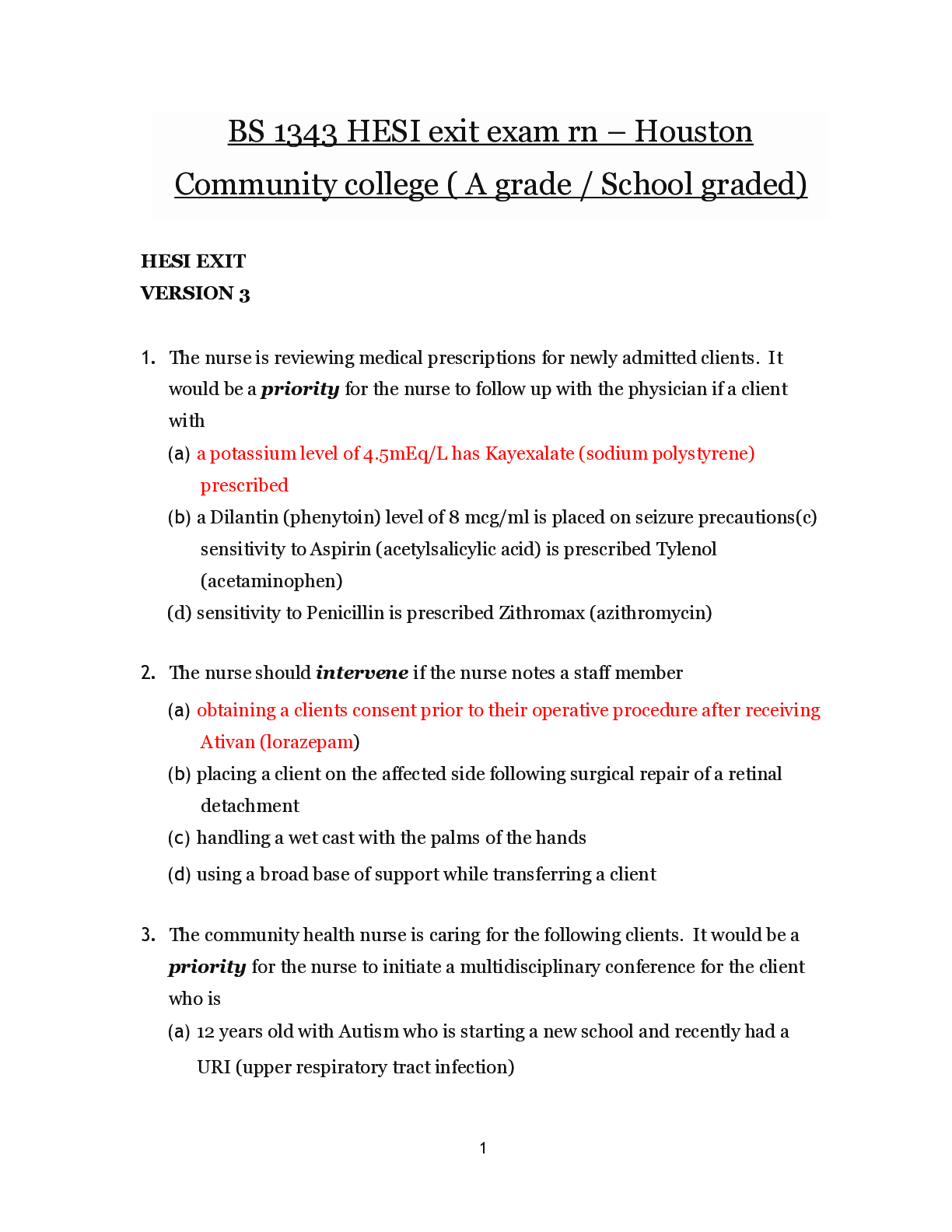











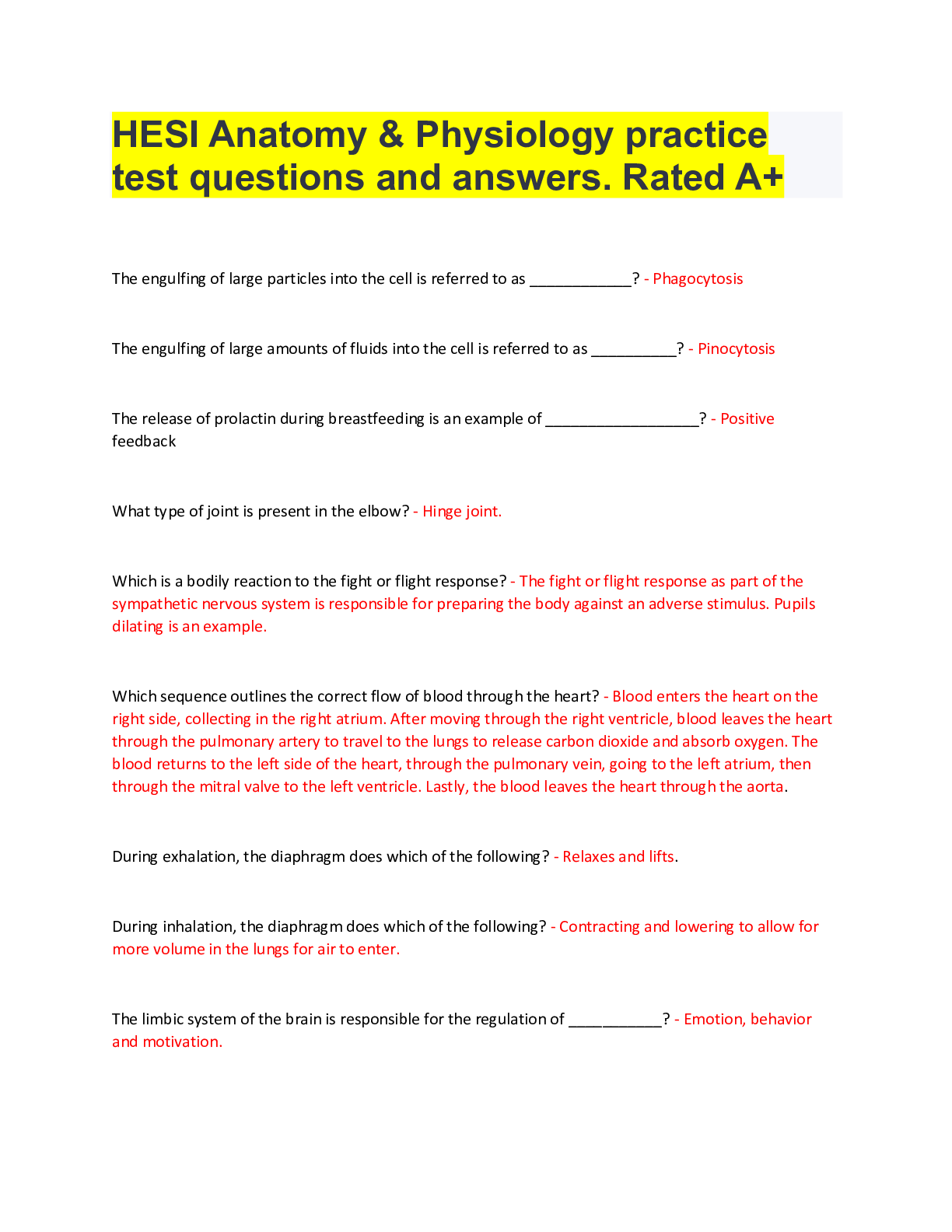
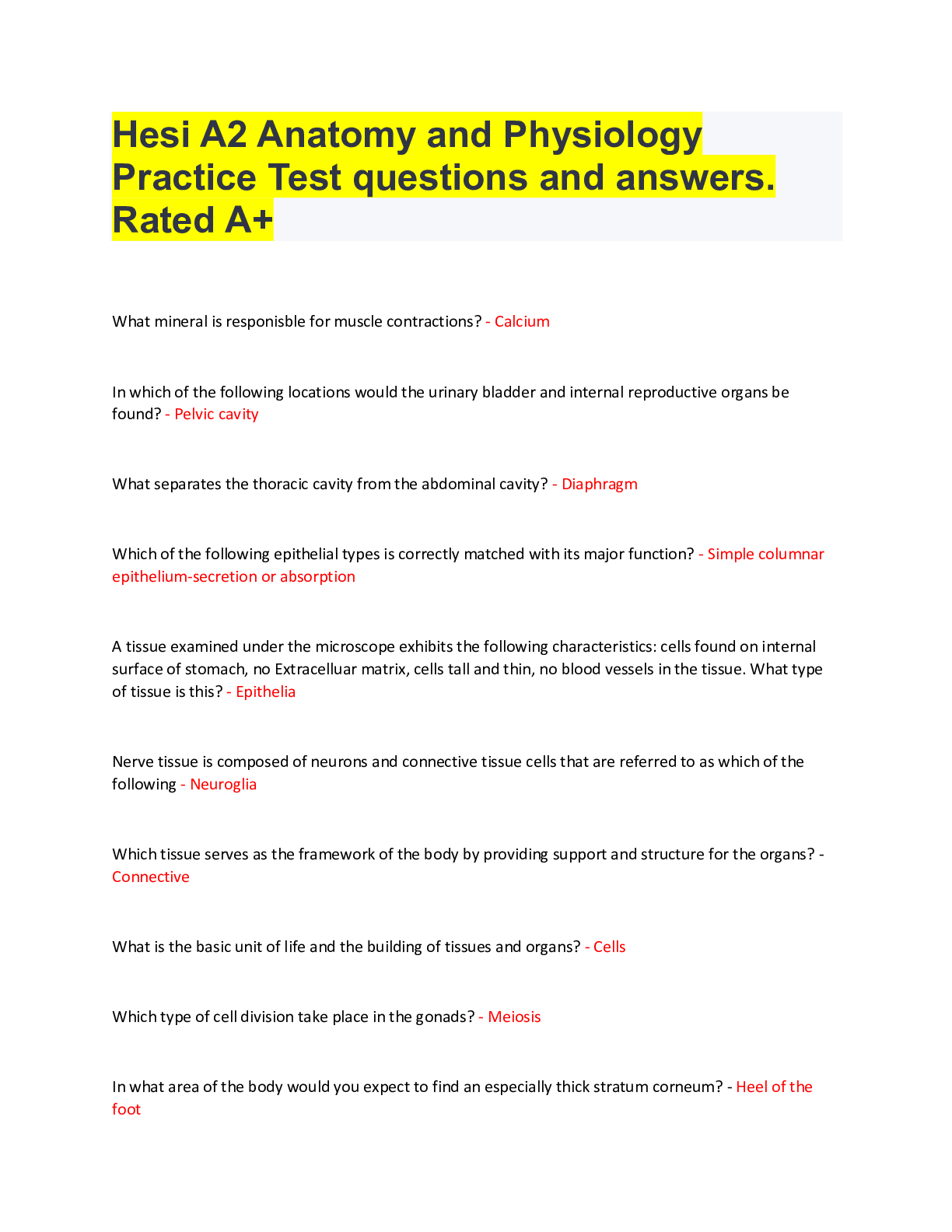
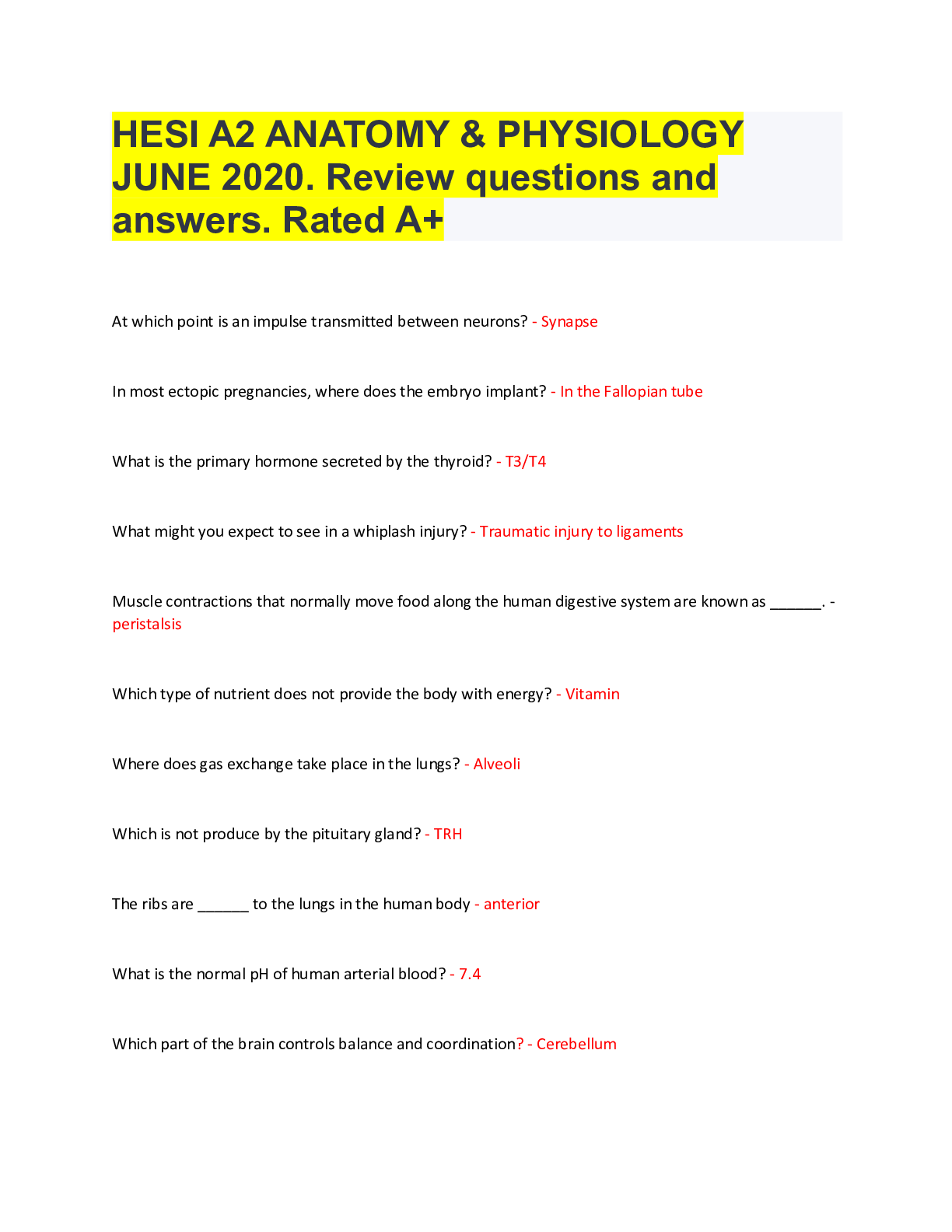

.png)

